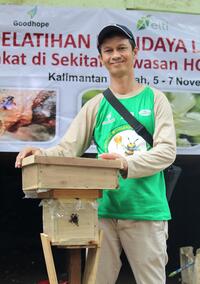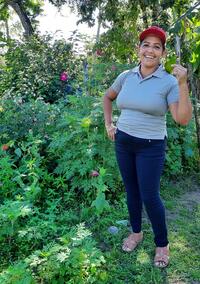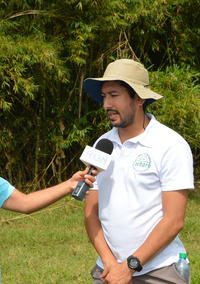You are here
Bringing Structure to Colombia’s Restoration Efforts
Of Colombia’s strategic ecosystems that have been highly degraded, only 7% of the endangered and highly fragmented tropical dry forest remains. Years of cattle ranching have compacted and polluted the soil, making this the country’s most degraded ecosystem. Recently, these areas have attracted palm oil growers, forecasting new, intensive fertilization and oil pollution.
Early regional efforts to create protected areas and drive restoration efforts for all ecosystem types have been scattered, small in scale and poorly monitored. Without appropriate monitoring, it is very difficult to assess the impact of restoration projects and argue for future efforts.
Wilson Ramirez, Senior Researcher and Coordinator of the Restoration Department at the Alexander von Humboldt Biological Resources Research Institute (IAvH by its Spanish name), knew there had to be a better way. He sought ELTI’s support to coordinate a high-level international course for organizations that might become collaborators, and to expand these organizations to monitor restoration projects.
ELTI was an ally before, during and after the course. They supported us at all times with input and advice. This has been a great opportunity to advance in capacity building, a good example of international collaboration, and a good planning example.
Wilson Ramirez
He reached out to officials and strategic researchers who were working in restoration themes already. If he could get them together to share their measures and methods, Wilson knew that they would each come away with greater capacity for monitoring future projects, among other outcomes.
As a measure of the program’s success, Wilson has received increasing demand for trainings at the national level. Recently, the IAvH has received several requests from sectors such as the Ministry of Hydrocarbons, Mining and Environment, and from the authority in charge of environmental licensing. Where appropriate, Wilson expects to seek ELTI’s support and participation in the future.


Acknowledgements
Thanks to Colombia’s Environmental Ministry for providing economical and technical support; Colombia’s National Parks Office for facilitating the course site; Colombia’s Center for Research in Sustainable Agriculture Systems for providing scientific support; the Yarumo Blanco Association for providing the infrastructure; and Severino Ribeiro, Ignacio Barrera, Mauricio Aguilar and Zoraida Calle for their teaching support.
–Wilson Ramirez



































































